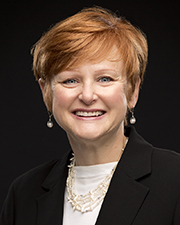Penn GSE Report Ranks the Risk to College Opportunity in all 50 States
We are “woefully unprepared” - Every state needs to make major changes to meet 21st century challenges.
Jeff Frantz (215) 898-3269 | frantzj@upenn.edu
*Note for TV and radio: The University of Pennsylvania has an on-campus ISDN line and ready access to a satellite uplink facility with live-shot capability.
Rising tuition prices and student debt loads have come to dominate the debate over the future of higher education in the United States. But a new report from the University of Pennsylvania’s Graduate School of Education (Penn GSE) finds that in order to understand the obstacles to making college accessible and affordable, leaders must consider, but look beyond college sticker price and state appropriations.
The College Opportunity Risk Assessment is the first state-by-state analytic tool to compare the many intersecting risks to postsecondary educational opportunity, such as how a state prepares its high school students, how it engages non-traditional college students, how it supports minority students, and the state’s fiscal health and stability.

The assessment includes a risk ranking for all 50 states, and an examination of where each state is most at risk. Among researcher Joni Finney’s findings:
- Every state has a long way to go to have enough adult workers with college degrees, workforce certificates, industry certifications, or other high-quality college credentials to meet the economic and civic challenges of the 21st century. Many states cannot reach the demand for more credentialed and degreed workers by focusing only on young people. Even Washington state, which is least at risk in these rankings, is projected to fall more than a quarter million credentials shy of expected need by 2025.
- States that are making the most per-student investments, and spending that money efficiently, are not in the clear. Despite besting the rankings in higher education funding and productivity, Arizona ranks 13th overall, and without significant changes, will struggle to produce enough graduates.
- While many states in the southeast are the most at risk (Mississippi, Alabama, South Carolina and Louisiana all rank in the bottom 5), the lower half of the rankings covers the map. This reflects the lack of a national policy for improving access to college.
- Wealth does not fully mitigate against risk. Connecticut has the second-highest median household income according to the US Census Bureau – but it ranks 44th here.
“The world has changed, but our public policies haven’t,” Finney said. “We’re still touting the successes of a system designed in the wake of World War II to allow 30 to 40 percent of the country, drawn mostly from white, affluent backgrounds, to earn a college degree even though that system now leaves us woefully unprepared for the challenges of the 21st century.”
What should policymakers prioritize to get on track? Finney has these suggestions:
- Prioritize students who have traditionally been left out of higher education. The nation cannot meet its educational needs by educating more mostly white 18-24 year olds. Low-income, first generation, minority, and working-adult students need to be supported in ways that have not been seriously attempted on a large scale. Start by focusing support on the institutions that educate most Americans, such as community colleges and regional comprehensive colleges.
- Rebalance the financial burden. Public colleges have more money flowing through them than ever before, but students are supplying a greater share of that revenue through tuition, while states’ contributions have proportionally fallen. This is a recipe for dropouts and debt, not degrees.
- Look beyond the education budget. States can’t prioritize higher education opportunity based on improved educational performance and equity without stable funding to higher education, the productive use of funds, the development of state reserves for economic downturns, and policies to better manage state debt and public pension liabilities, as well as policies to encourage economic growth and knowledge-based industries.
- Find partners. Governors, legislators, business leaders, and institutional leaders must collaborate more effectively than in the past few decades in order to put in place a public compact for educational opportunity that will serve states in the decades to come.
A professor of practice at Penn GSE and the director of the Institute for Research on Higher Education, Finney has spent her career helping policymakers and higher education leaders understand the challenges making postsecondary education accessible and affordable to a wide range of American students. This risk assessment follows the Measuring Up reports Finney co-authored as vice president of the National Center for Public Policy and Higher Education, and her College Affordability Diagnosis.
The University of Pennsylvania Graduate School of Education is one of the nation’s premier research education schools. No other education school enjoys a university environment as supportive of practical knowledge building as the Ivy League’s University of Pennsylvania. The School is notably entrepreneurial, launching innovative degree programs for practicing professionals and unique partnerships with local educators, and the first-ever business plan competition devoted exclusively to educational products and programs.
